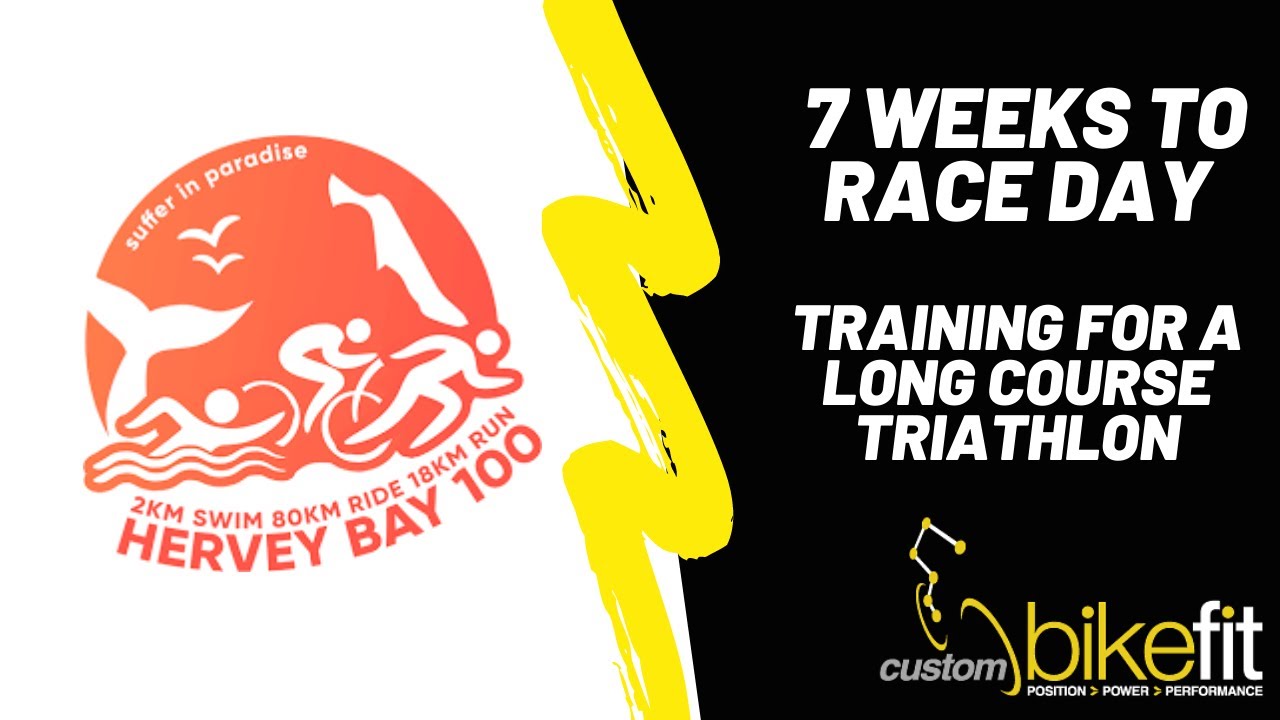Training for a Long Course Triathlon – 7 Weeks to Race Day with Custom Bike Fit
Source: Custom Bike Fit Youtube Channel: Training for a Long Course Triathlon – 7 Weeks to Race Day
Video Training for a Long Course Triathlon – 7 Weeks to Race Day with Custom Bike Fit
Video Training for a Long Course Triathlon – 7 Weeks to Race Day with Custom Bike Fit YouTube Channel.
Training for a Long Course Triathlon – 7 Weeks to Race Day
Title: Understanding the Custom Bike Fit Coaching and Training Program
Introduction
The custom bike fit coaching and training program is designed to help athletes prepare for their next race, such as the Harvey Bay 100 race. In this program, athletes work closely with a coach to develop a structured training plan that addresses their specific needs and goals. This article will provide an in-depth look at the coaching and training program, including the philosophy behind the training approach, the types of training sessions involved, and the overall goal of the program.
Meeting the Athlete: A Fitness Journey
Michael, a seasoned athlete himself, has recently taken up coaching to assist athletes in their fitness journey. In a recent zoom recording, he discussed his coaching journey and partnership with Custom Bike Fit. The program is designed to give followers and audiences an insight into the coach-athlete relationship and the thought process behind the training program. He has been coaching an individual for the Harvey Bay 100 race, which is just seven weeks away, and aims to shed light on the training process for the event.
Analyzing the Athlete’s History and Condition
The athlete, a master’s athlete with extensive experience in Ironman and half Ironman races, recently participated in the Sunny Coast 70.3 with minimal training. As a result of this lack of structured training, he experienced fatigue and even sustained an injury during the race. This highlights the importance of proper training and preparation for endurance events. Despite his experience as an athlete, the lack of structured training had a significant impact on his performance.
Setting Goals and Establishing Training Principles
The athlete’s primary goal is to perform to the best of his ability at the Harvey Bay 100 race. While winning his age group would be a bonus, his main focus is on giving his best performance. In terms of training principles, he has previously experienced different coaching approaches, including aerobic conditioning and a focus on hard work without much aerobic conditioning. However, the lack of structure in his recent training led to a sense of being lost and lacking guidance.
Building Aerobic Capacity with a Polarity Approach
The coaching program focuses on rebuilding the athlete’s aerobic capacity, given the limited time available before the race. This entails a polarized training approach, which involves a combination of low-intensity and high-intensity sessions. Through this approach, the athlete engages in aerobic conditioning while also incorporating bursts of speed and intensity to stimulate muscle fibers and the neuromuscular system. This balanced approach aims to improve overall performance while minimizing the risk of injury and fatigue.
Designing Specific Training Sessions
The specific training sessions included in the program are designed to address the athlete’s specific needs and limitations. For instance, the bike training sessions include elements of high-intensity intervals and strength drills to improve force production and cadence variation. Likewise, the swim sessions involve a mix of aerobic and high-intensity sets, along with technique-focused drills to enhance swimming efficiency. These tailored sessions play a crucial role in addressing the athlete’s weaknesses and preparing him for the upcoming race.
Monitoring Progress and Adapting the Training Plan
The coaching program emphasizes the importance of monitoring progress and making adjustments as necessary. By continuously evaluating the athlete’s performance and response to training, the coach can modify the training plan to ensure optimal results. For example, the athlete’s response to swim sessions highlighted the need for increased intensity in the hard sets, prompting adjustments to future sessions. This adaptive approach demonstrates the coach’s commitment to tailoring the program to the athlete’s evolving needs and capabilities.
Conclusion
The custom bike fit coaching and training program provides athletes with a comprehensive and personalized approach to race preparation. By leveraging a combination of structured training sessions, tailored workouts, and adaptive planning, the program aims to maximize performance while minimizing the risk of injury. As athletes like Michael gear up for the Harvey Bay 100 race, the insights gained from this coaching program offer valuable lessons in effective training and goal achievement.
The opinions expressed in this space are the sole responsibility of the YouTube Channel Custom Bike Fit and do not necessarily represent the views of CicloNews.










